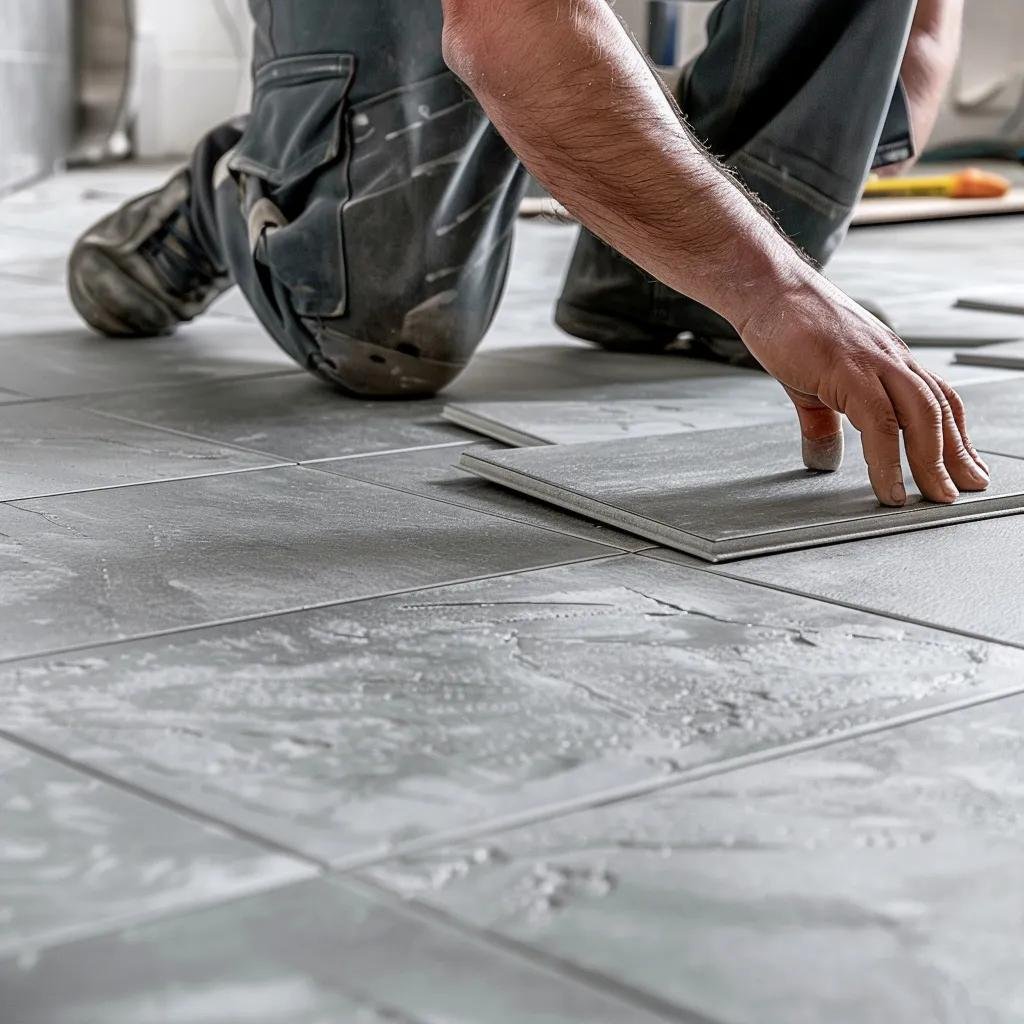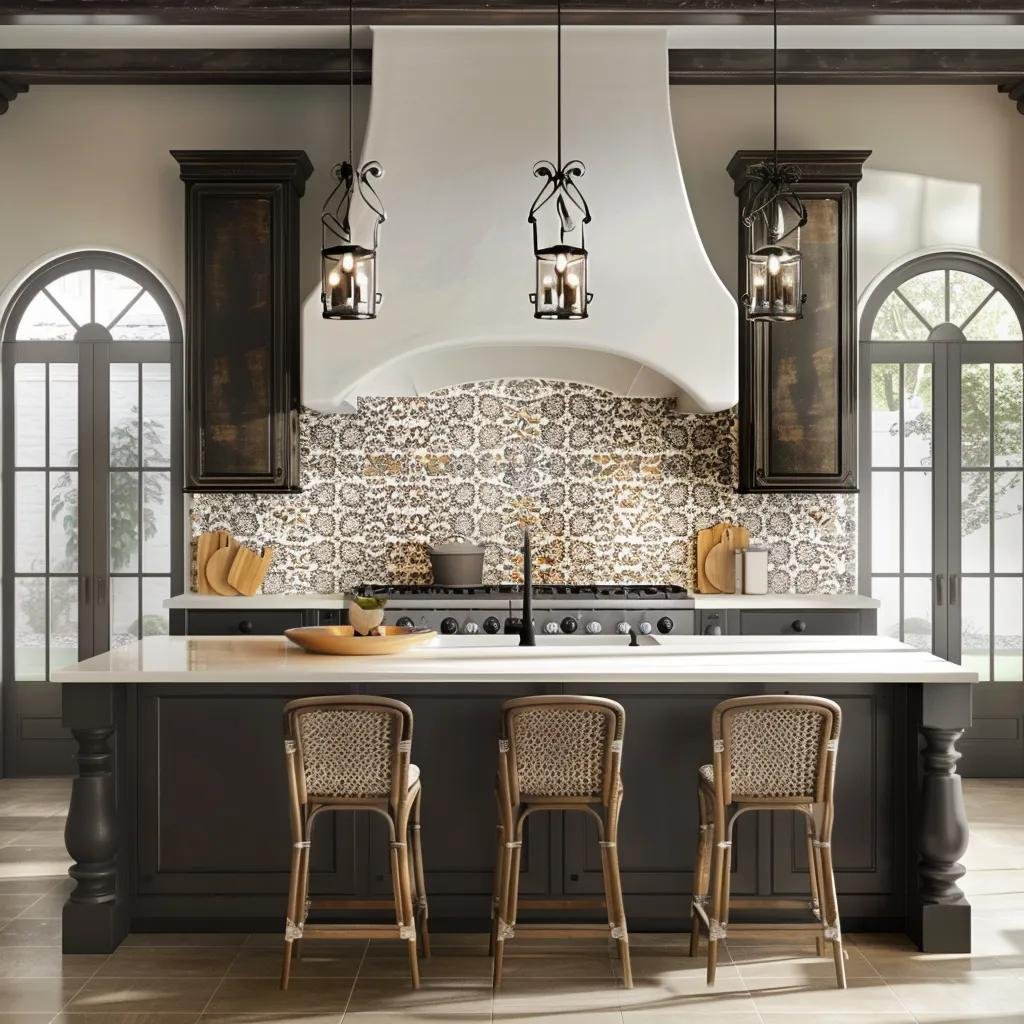Article:
Upgrade Your Kitchen with Ideal Tile: Benefits and Installation
Choosing the right tile for your kitchen remodel is more than just a design choice—it’s a strategic move that impacts durability, maintenance, and the overall value of your home. Many homeowners underestimate the power of expert tile installation in enhancing both resilience and style, often leading to costly mistakes or missed opportunities. This guide explores the most durable tile materials, the latest design trends, professional installation techniques, realistic cost considerations, and essential local insights for the Washington D.C. metro area. Discover how Scanbuild LLC elevates every aspect of a luxury kitchen remodel with expert tile selection and craftsmanship.
Why Durability is Key in Kitchen Tile Selection
Durability in kitchen tiles means choosing materials that can withstand heavy foot traffic, spills, and temperature changes without cracking or staining. This resilience not only protects your investment but also keeps your floors and backsplashes looking pristine. Here are the top choices for long-lasting kitchen tiles:
- Porcelain tile for its unmatched hardness and moisture resistance.
- Ceramic tile for cost-effective durability in areas with moderate traffic.
- Natural stone tile for unique aesthetics, provided it’s properly sealed.
Consider these core properties when comparing materials:
These comparisons highlight how material properties directly influence longevity, guiding you toward the most resilient kitchen finishes.
Understanding Tile Durability and Performance
Research shows that porcelain tile, with its low porosity, offers superior resistance to water and staining, making it a durable choice for kitchen environments. This characteristic helps maintain the tile’s appearance and structural integrity over time, reducing the need for frequent replacements.
This research supports our claims about the benefits of porcelain tile in kitchen applications.
Top Tile Materials for Kitchen Longevity
Porcelain, ceramic, and certain natural stones each offer distinct longevity advantages based on density, sealant requirements, and maintenance needs. Porcelain stands out for its low porosity, often below 0.5%, while ceramic offers a balance of affordability and durability. Natural stones like granite or slate bring classic beauty when properly sealed. Choosing the right material ensures your floors and backsplashes resist chips and discoloration over time.
Impact of Tile Durability on Kitchen Remodeling
High-durability tiles minimize replacement cycles and reduce maintenance costs by resisting cracks and stains in busy kitchens. Durable surfaces support underfloor heating installations, maintain consistent gaps without grout crumbling, and preserve overall finish integrity, thereby increasing your home’s market appeal and functional lifespan.
The Role of Water and Stain Resistance in Tile Selection
Water resistance is crucial for preventing moisture penetration and mold growth, especially around sinks and prep areas, while stain resistance guards against cooking spills and acidic residues. Tiles with superior glaze finishes and impervious cores, such as porcelain, elevate hygiene and simplify cleaning routines, ensuring both function and aesthetics endure.
Design and Aesthetics: Shaping Your Kitchen Remodel
Kitchen tile choices define the overall style narrative, uniting cabinetry, countertops, and lighting into a cohesive design. Thoughtful selection of color, pattern, and texture can make a small galley kitchen feel expansive or emphasize a statement backsplash in an open-concept layout.
Leading Kitchen Tile Trends for 2025
Earthy hues, large-format slabs, and textured finishes are leading tile trends, offering a modern yet warm atmosphere. Urban-inspired geometric patterns and artisanal zellige tiles add tactile depth, while marble-look porcelain slabs deliver luxury with improved durability compared to natural stone.
- Terracotta and forest-green tiles for natural warmth.
- Oversized porcelain slabs mimicking marble veins.
- Textured ceramics like fluted or 3D relief for sculptural appeal.
These trends illustrate how surface treatments and scale can enhance both form and function in contemporary kitchens.
Transforming Your Kitchen with Tile Color, Pattern, and Texture
Bold color palettes inject personality and focal points, while subtle neutrals create a timeless backdrop for evolving décor. Patterned layouts—from herringbone to arabesque—guide visual flow, and tactile textures add dimensional contrast to smooth countertops, elevating both comfort and style.
The Importance of the Kitchen Backsplash
As both a protective barrier and visual anchor, a backsplash balances function with artistry, shielding walls from splashes and grease. A high-impact tile backsplash can serve as an architectural focal point, drawing the eye and reinforcing the kitchen’s overall theme through complementary colors and finishes.
The Crucial Role of Professional Tile Installation

Professional tile installation ensures precise subfloor preparation, correct adhesive selection, and accurate grout application, which collectively guarantee a flawless finish and lasting performance. Improper techniques can lead to uneven surfaces, grout cracking, or tile lippage, undermining both beauty and functionality.
- Thorough subfloor leveling to prevent future tile movement.
- Industrial-grade adhesives tailored to tile size and substrate.
- Consistent grout joints and sealing to block moisture infiltration.
Essential Kitchen Tile Installation Techniques
Key techniques include establishing a level, crack-resistant underlayment, employing a notched trowel to achieve full mortar coverage, and using spacers for uniform joint widths. Accurate tile cuts around cabinets and fixtures ensure seamless integration with countertops and appliances.
Enhancing Tile Durability and Appearance with Professional Installation
Skilled craftsmen align tiles to minimize stress points, apply grout sealants correctly, and inspect joints for consistency, all of which fortify the tile assembly against heavy use and maintain an even surface that showcases patterns and textures without visible imperfections.
Choosing the Right Grout for Optimal Tile Performance
Epoxy grout offers superior stain resistance and flexibility, ideal for luxury kitchens, while sanded cement grout provides strength in wider joints and a range of color options. Proper grout choice complements tile material and design, reducing maintenance and enhancing the final aesthetic.
Understanding Kitchen Tile Installation Costs
Factors Influencing Kitchen Tile Installation Costs
The cost of kitchen tile installation is influenced by various factors, including material quality, labor rates, and the complexity of the installation. High-end materials and intricate designs often increase labor hours and overall project expenses.
This citation provides context for the cost considerations discussed in the article.
Typical Labor and Material Costs for Kitchen Tile Installation
Labor rates in the Washington D.C. area range from $8 to $15 per square foot, while mid-range porcelain tiles cost $5 to $12 per square foot. Luxury natural stone can exceed $20 per square foot, and backsplash tiles often run $10 to $15 per square foot installed.
Impact of Tile Type and Quality on Installation Expenses
High-end large-format porcelain or artisan-crafted ceramic requires slower-setting mortars and precise cutting tools, increasing labor hours. Conversely, standard ceramic and vinyl tile options reduce upfront costs but may require more frequent replacement over time.
Benefits of Investing in High-End Tile and Installation
Premium materials paired with expert installation enhance home value, minimize long-term maintenance, and deliver a refined finish that resonates with luxury buyers. This investment supports a higher resale price and ensures enduring performance under heavy kitchen use.
Below is a cost breakdown for typical kitchen tile installation components in the D.C. metro area:
Understanding these cost drivers allows you to align material choices with your budget and long-term goals.
Choosing the Right Tile for Your Kitchen Remodel in Washington D.C.
Washington D.C. homeowners favor tile designs that complement local architectural styles—from Federal townhouses in Georgetown to contemporary Potomac kitchens. Evaluating material performance, style trends, and professional support ensures a seamless remodel.
Popular Tile Materials and Styles Among DC Metro Homeowners
Neutral large-format porcelain and honed marble-look slabs are trending for their blend of durability and elegance, while textured subway tiles and artisanal ceramics add regional character. Combining classic neutrals with bespoke patterns reflects the area’s sophisticated taste.
How Scanbuild LLC Supports Luxury Kitchen Tile Selection and Installation
Scanbuild LLC partners with homeowners to curate tile samples, develop custom layouts in 3D renderings, and execute precise installations using licensed, bonded crews. Our design-build approach streamlines decision-making, ensuring every tile aligns with your vision and performance standards.
Scheduling a Consultation for Your Kitchen Tile Project
To explore tile installation techniques for your kitchen renovation, contact Scanbuild LLC at our Washington D.C. showroom or through our website. Our team will assess your space, provide material recommendations, and deliver a tailored project estimate.
Thoughtful tile selection is the cornerstone of a luxury kitchen remodel, driving durability, design coherence, and property value. By prioritizing material performance, current aesthetics, and expert installation, you achieve spaces that last a lifetime. Scanbuild LLC’s local expertise and comprehensive design-build services support each phase, transforming tile choices into lasting assets. Start your luxury kitchen transformation today to enjoy a kitchen that performs beautifully and elevates your home.


Recent Comments